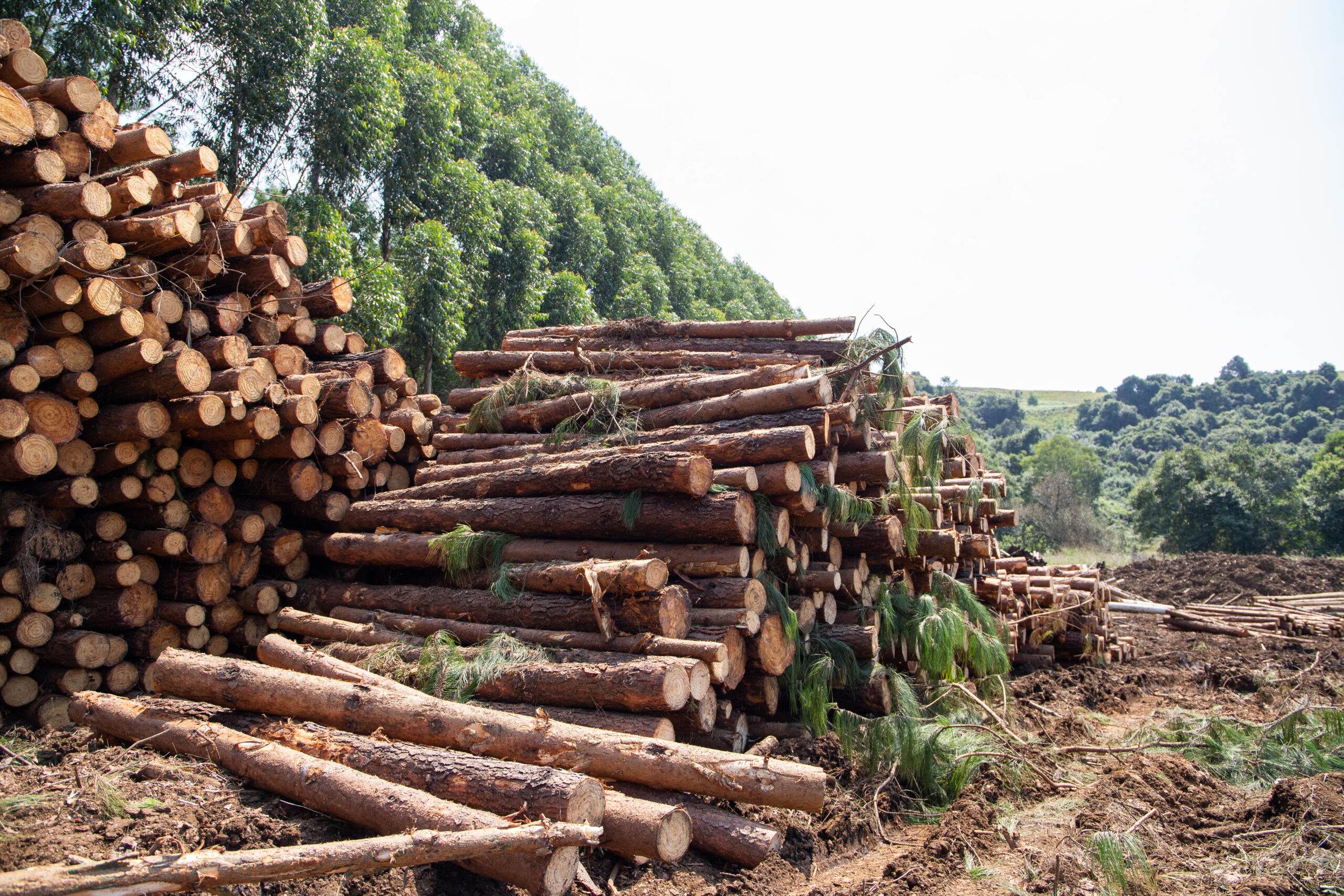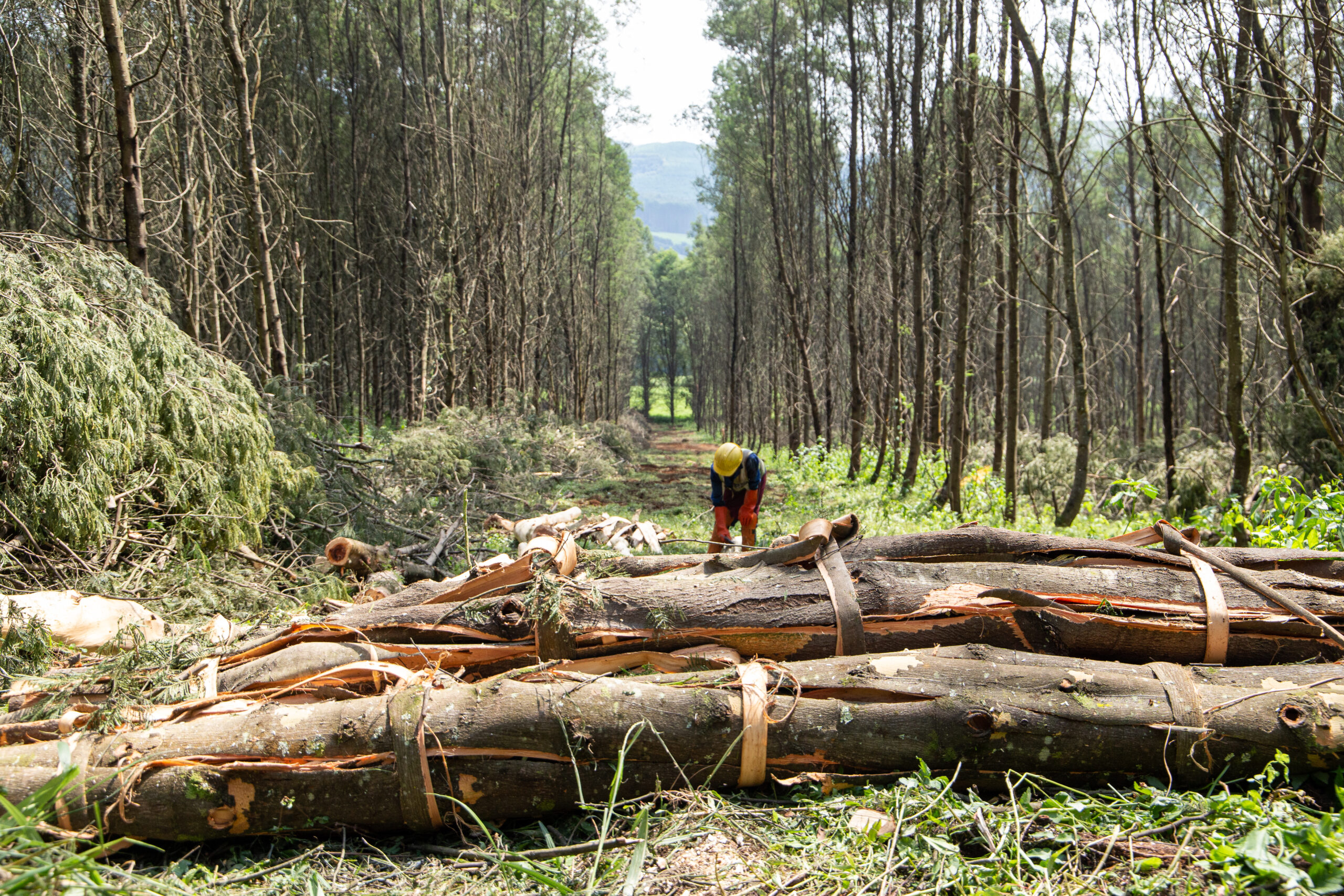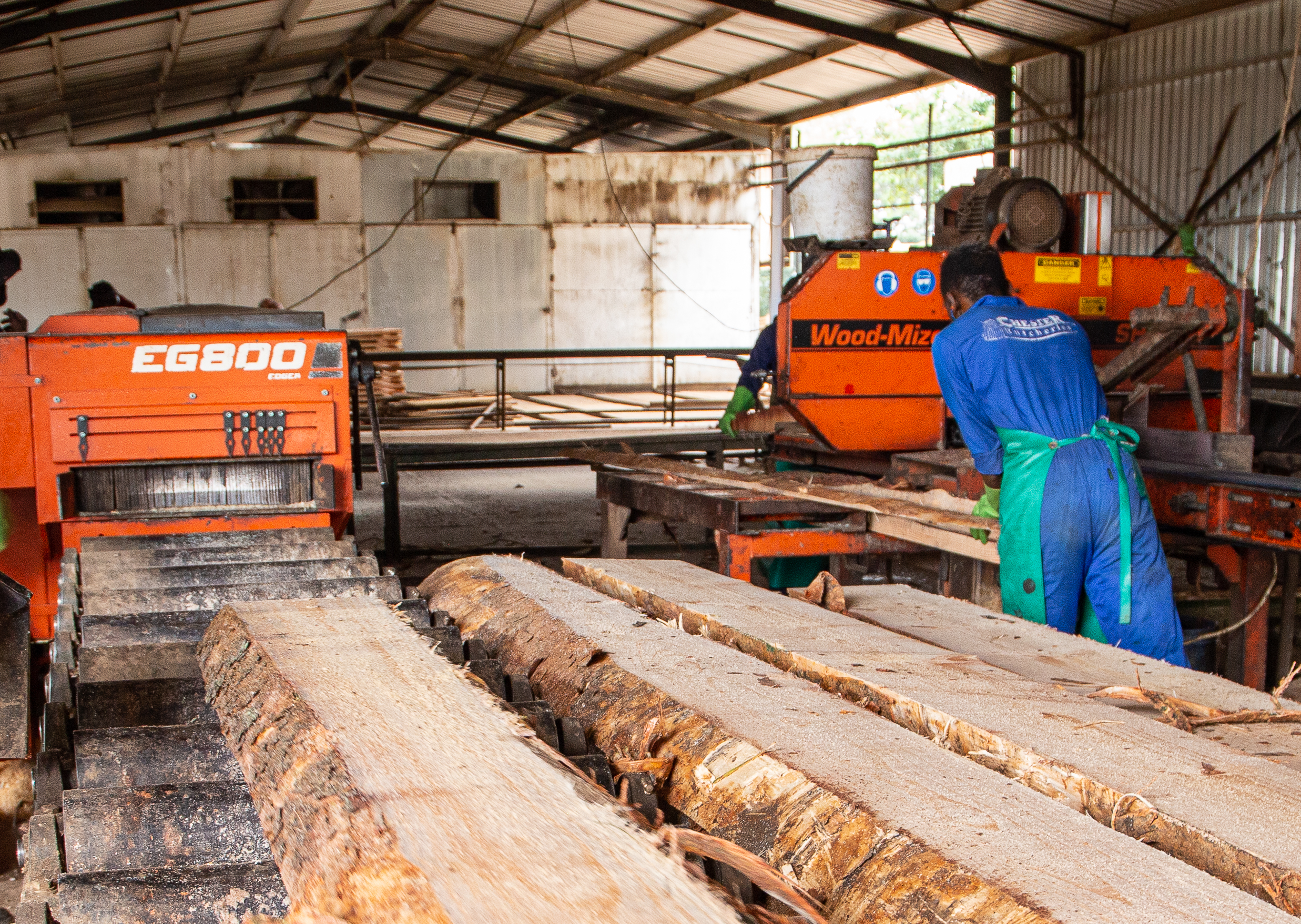Orange is the colour of success for KwaZulu-Natal-based Trewirgie Timber. The flourishing farming enterprise relies on an orange-liveried Wood-Mizer sawmill line at its Orange Farm Sawmill operation to produce a third of the agri-business’ total annual income.
Owner and proprietor of Trewirgie Timber Pty (Ltd) Ben Seele is humble while surveying the Seele farmstead from the hills above Orange Farm Sawmill.
“I’m a fourth-generation farmer, and I’m simply improving on the legacy that those that went before me created and the beauty and potential of this place,” Ben says.
His cross-generational mindset and sense of custodianship have shaped Ben’s thinking to provide a razor-sharp business mind with a low-impact, balanced edge.
In 2022 this has produced Trewirgie Timber, a multi-faceted, dynamic agri-business that integrates Ben’s management style and worldview to unlock surplus opportunities in the sector.

Pine from Trewirgie’s commercial plantations. Roughy 600 ha is planted to pine, the same for wattle with the remainder of the 2400 ha planted to gum.
Ben’s father Carl purchased a dairy and beef farm in the hills above Baynesfield in 1979 and converted it into a timber farm. Ben took over in 2001, set up a sawmill and used the profits to purchase more land in the Richmond and Dargle areas.
In 2022 Trewirgie Timber (Pty) Ltd has an impressive 2400 ha under plantations with a total land area of 4300 ha available for further diversification, but timber remains the focus.
“Diversification has proven to be an ideal strategy in dealing with fluctuating and volatile demand scenarios,” Ben says. “The strategy is to grow different species on different sites for different markets and applications. In doing we’ve been able to adapt to changing markets and react to market opportunities,” Ben says.

Wattle bark stripped and ready for tannin production.
It starts with trees.
Pine, Eucalyptus and Wattle combine to deliver the feedstock for Trewirgie’s product mix.
Pine is grown mainly for sawtimber and processed at the Orange farm Sawmill at Baynesfield, while wattle is managed for pulp and bark production. Several Eucalyptus species and clonal hybrids are grown for sawtimber production, pulp and eucalyptus oil from leaf harvesting.
Poles, pallet material, beef and avocados provide further choice with the final commission to tread softly on this place, the guiding principle that drives Trewirgie’s successes home.
The conservation management principles used on the farm are noteworthy.

A Wood-Mizer LT70 Remote working at Orange Farm Sawmill large
It starts with ensuring that timber farming activities do not pollute or degrade the environment and that specific sites are left fallow to protect the eco-systems. Unplanted areas are used for grazing, but careful veld management retains its conservation value.
Fire breaks, riparian zones, indigenous forests and grasslands are kept free of invasive weeds, with this rehabilitation a crucial part of Ben’s soil management practices. Fire is sparingly used to maintain compartments with cool burns retaining the long-term productivity and sustainability of the soil.
Harvesting and silviculture work on the farms is done in-house, using traditional motor-manual felling systems, cross-cutting with chainsaws, and stripping bark off the gum and wattle by hand. The brush is stacked neatly to facilitate easy access and re-establishment of the compartment.

A Wood-Mizer EG800 Multirip processing slabs into sawn timber. Two Wood-Mizer single head resaws takes care of recovery.
He only uses contractors to help with harvesting from time to time when he needs to deliver a lot of timber to market in a short space of time. This gives sustainable employment to 237 employees working in harvesting, silviculture, sawmilling, transport, security, cattle, and avocado production.
The overall theme of Trewirgie is one of structured, astute management with a careful balance between profitability and low impact.
Sawmilling
Ben’s journey in sawmilling started after his studies and a brief sojourn in Norway and the UK, working as chainsaw operator and harvester. His return to SA in 2011 saw his father Carl assisting him in buying his first Wood-Mizer LT30 sawmill to cut logs from Carl’s timber operation.

A Wood-Mizer TVS removing two sides off logs from Trewirgie’s thinnings operations with the cant then passing through a multirip.
The proceeds from the sawmill then allowed Ben to buy timber farms in Richmond, Baynesfield and Dargle, consolidate the agri-business under the Trewirgie banner and lease the family farm in 2022 to generate a third of the total operation’s income from sawmilling.
The highly productive sawmill has a monthly intake of around 1000 tonnes, with a yield or output of approximately 500 cubic metres out. Recovery is between 43-55 % depending on the log sizes.
The mill is built around two processing lines, one for large diameter logs and the other to process thinnings. Both use Wood-Mizer equipment except for a Pinnacle Multirip on the thinnings line.
The large-diameter line consists of a Wood-Mizer LT70 Remote and LT30 producing slabs that pass through an EG800 multirip. Sawn material is then kiln dried for use in door manufacturing.
The thinning line consists of a Wood-Mizer Twin Vertical Saw (TVS) that squares the log on two sides before passing through a Pinnacle Multirip.

The finished product ready fir kiln drying.
The output from the thinnings line and material recovered from sideboards with two Wood-Mizer single head resaws goes to bed and lounge suite manufacturers or is used for pallets and fencing or sold wet-off saw for diverse other applications.
The simplicity of both lines contributes to the efficiency of the operation.
Cants ripped into sawn material require minimal labour, with recovery also kept very simple. The mill is highly productive despite the low manual inputs and basic and inexpensive material handling.
Recovery is high; costs are kept low, and a diverse mix of products exit the mill to bolster profits using a renewable, well-managed resource with people also benefitting – the classic triple bottom line result.

Trewirgie Timber (Pty) Ltd’s Ben Seele on the left together with his sawmill manager, Conrad Strydom.
A final thought
It’s a rare privilege to meet a forward-thinking, innovative farmer and sawmiller like Ben Seele. He’s proud of his heritage; he builds into the future understanding of what it’ll take to remain successful in the time to come.
Timber is the ultimate cash crop – it can grow forever if managed well, and it can build businesses that improve lives, and we can sit in its shade.
Ask Ben Seele; he knows.









